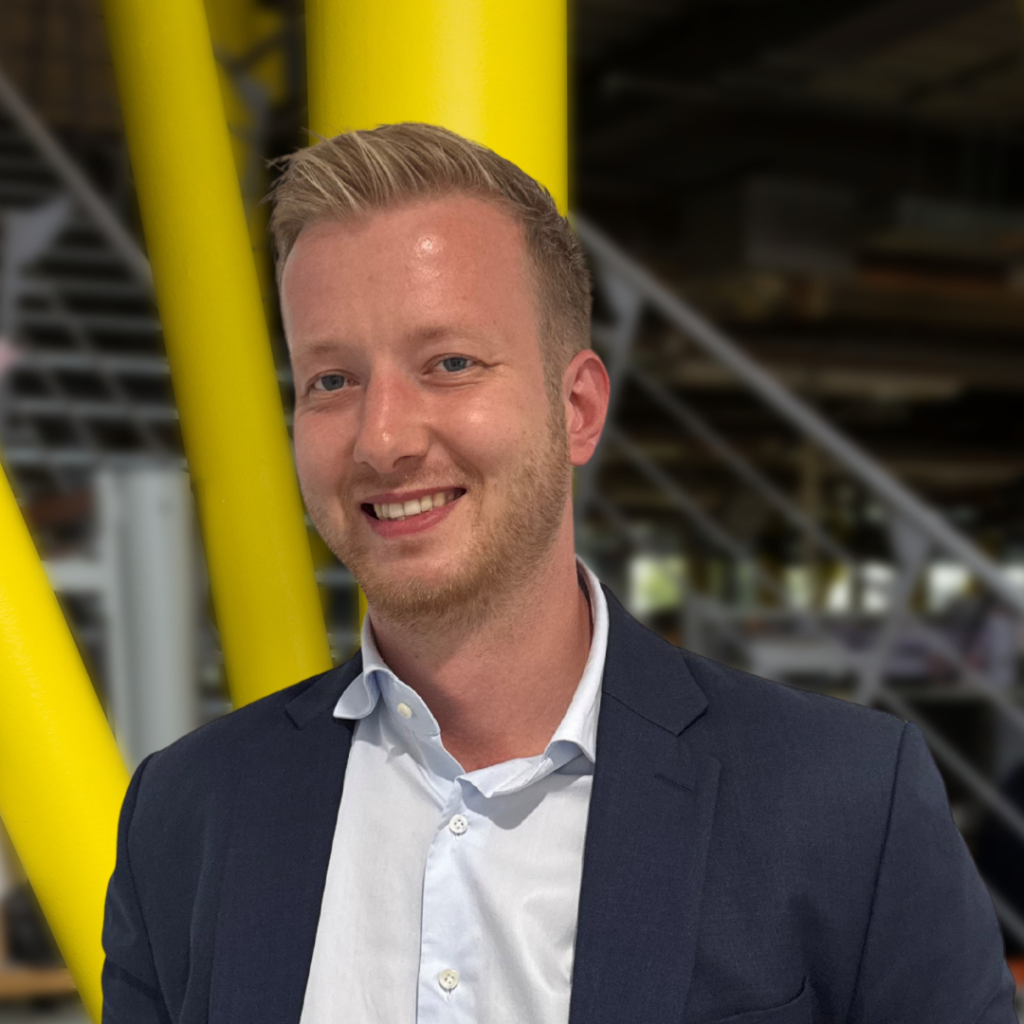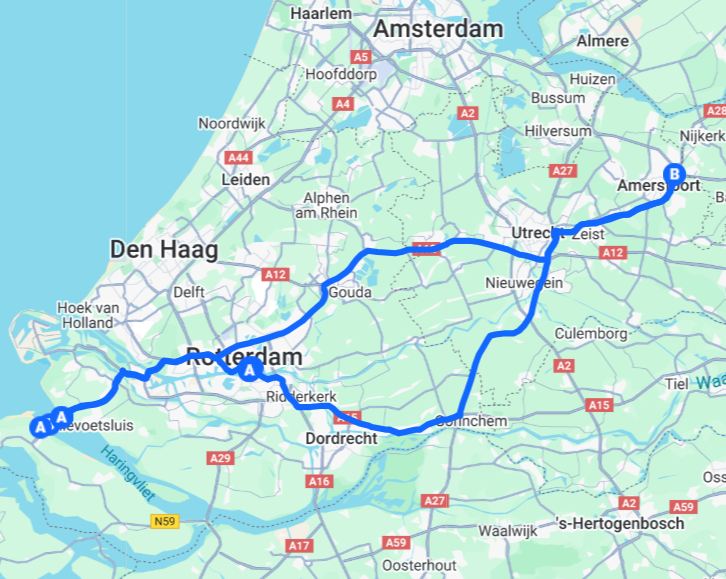Stage 4: The battle against the water
Maria Siopi | 9. September 2025
Today’s ride of the igus:bike tour carries a very special theme: The battle against the water. Few places in the world illustrate the delicate relationship between humans and water as clearly as the Netherlands. From majestic bridges to world-famous flood defenses, this stage offers not only beautiful cycling but also a fascinating story of resilience, ingenuity, and history.
Rotterdam’s icons: Erasmusbrug and Willemsbrug
Our journey began in Rotterdam, a city shaped by both destruction and renewal. Many years ago Rotterdam started with a blank canvas and later transformed into one of Europe’s most modern skylines.
Cycling across the Erasmusbrug, which is known for being elegant, having sweeping pylon, and it’s always an experience. Opened in 1996, it’s not only a functional connection across the river Maas, but also a symbol of Rotterdam’s architectural ambition. At 802 meters long, it is one of the Netherlands’ most striking bridges and often the backdrop for sporting events and cultural festivities.
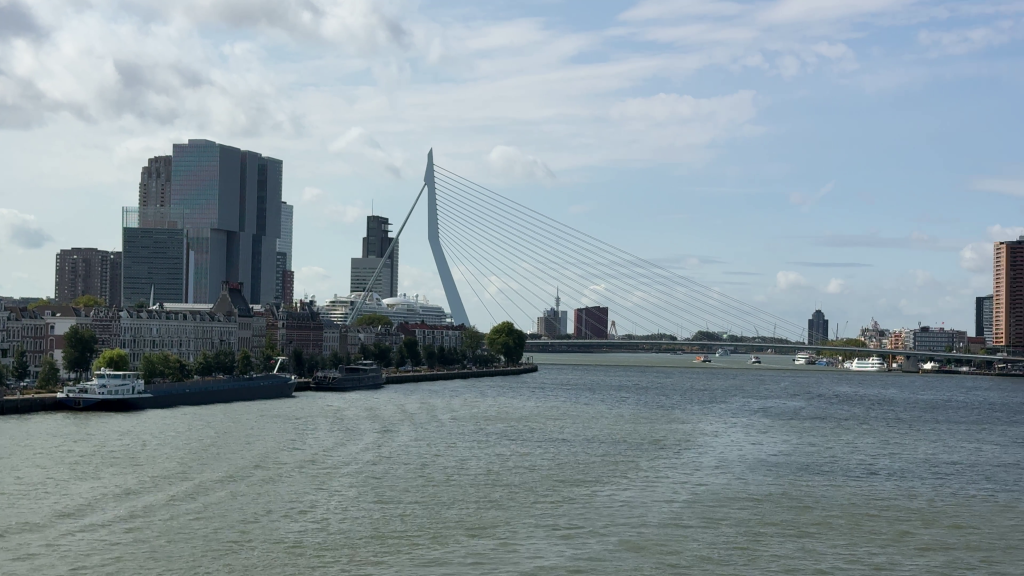
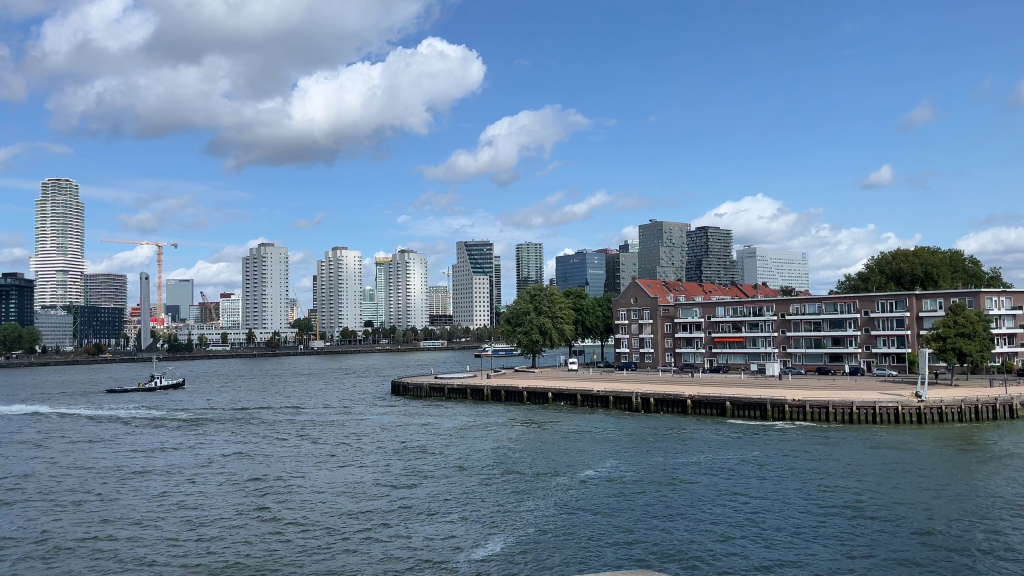
Not far away stands the Willemsbrug, a bold red suspension bridge completed in 1981. It replaced its 19th-century predecessor and remains a key artery for traffic. Together, the Erasmusbrug and Willemsbrug embody Rotterdam’s nickname, “Gateway to Europe”— a city where trade, innovation, and design meet.
For Mark van de Waal, who grew up cycling along the Dutch waterways, crossing these bridges felt like coming home. He explained how the skyline of Rotterdam never fails to impress him, even after countless visits. Biking through Rotterdam offered Justine Burcham a powerful contrast between past and future. The sleek lines of the Erasmusbrug and the raw, industrial character of the Willemsbrug each tell their own story — symbols of a city shaped by resilience, reinvention, and forward thinking.
As we crossed these bridges during the igus:bike tour, it felt like the perfect metaphor: connecting innovation with history, and motion with meaning.
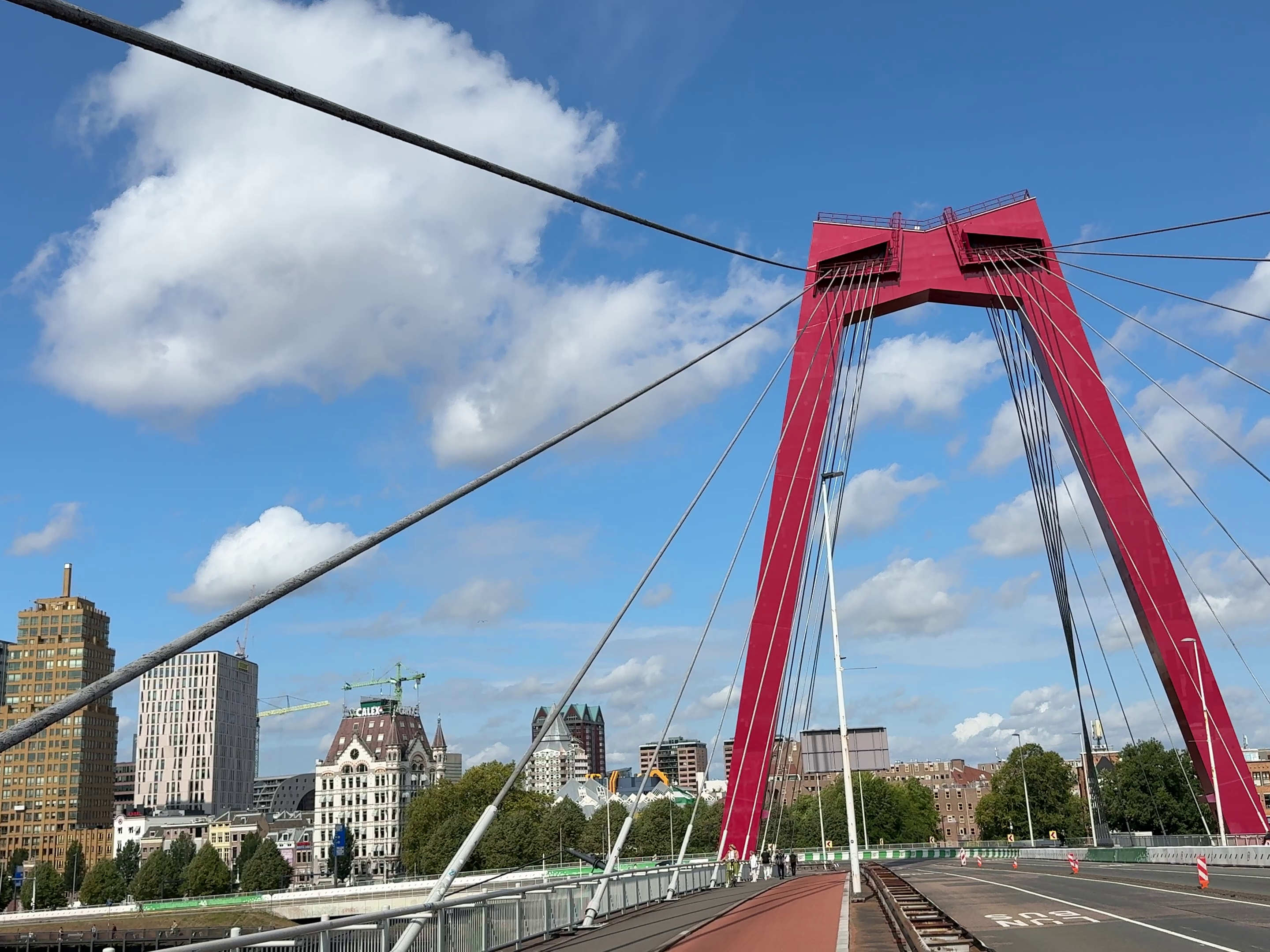
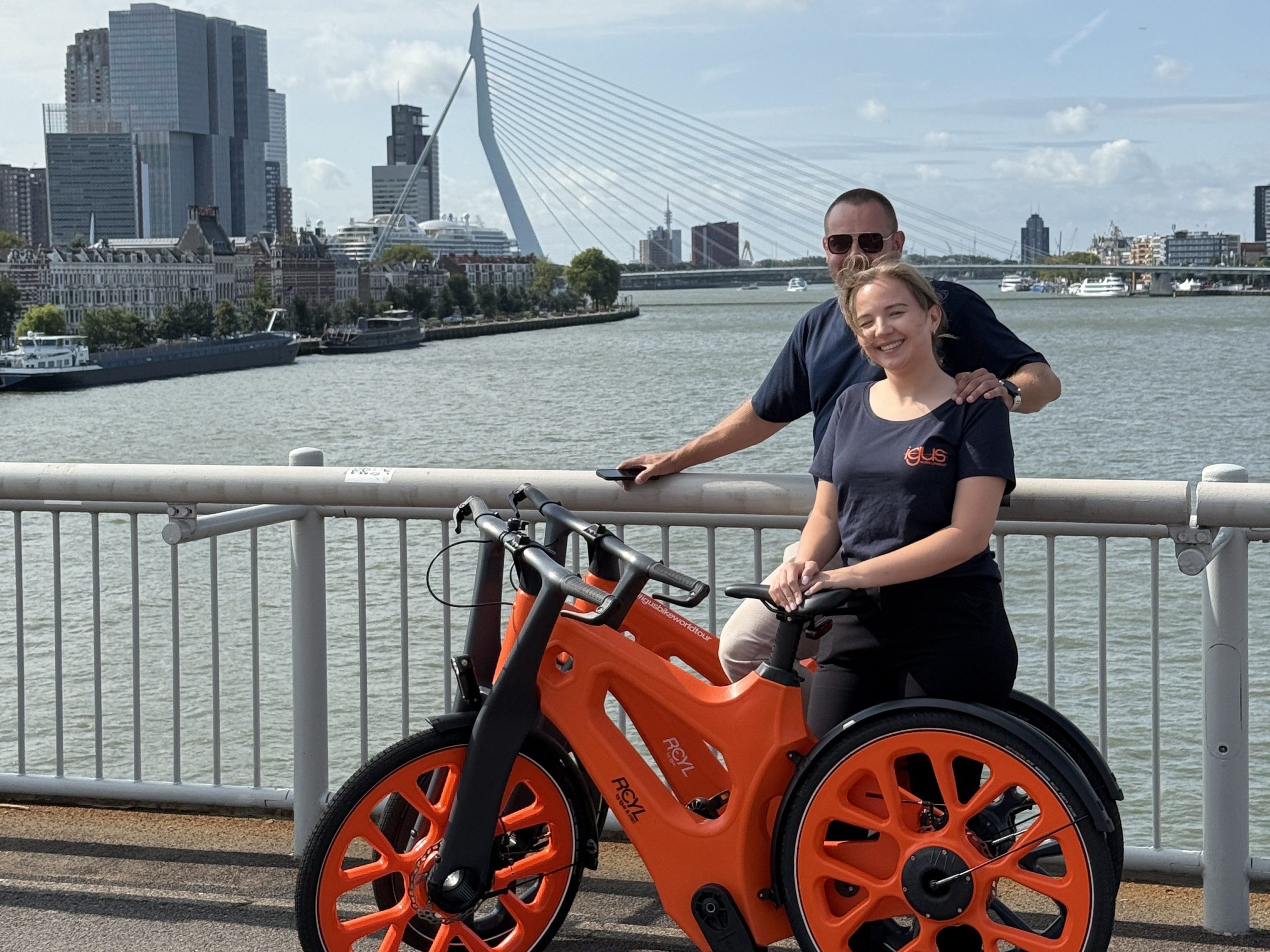
From the Maas to the Sea: Toward the Delta Works
Leaving Rotterdam behind, the team cycled southwest toward the Haringvlietsluizen, an impressive accomplishment of Dutch engineering and a vital part of the Delta Works.
Built in response to the catastrophic North Sea Flood of 1953, which claimed more than 1,800 lives, the network of dams, sluices, locks, dikes, and storm surge barriers is designed to keep the low-lying Netherlands safe from the sea. Haringvlietsluizen, completed in 1971, are particularly important: they regulate the flow of the Rijn and Maas rivers into the North Sea. On stormy days, they protect the other cities in The Netherlands from flooding; on calmer days, they allow fresh river water to flow out, maintaining the delicate balance of nature in this river side area.
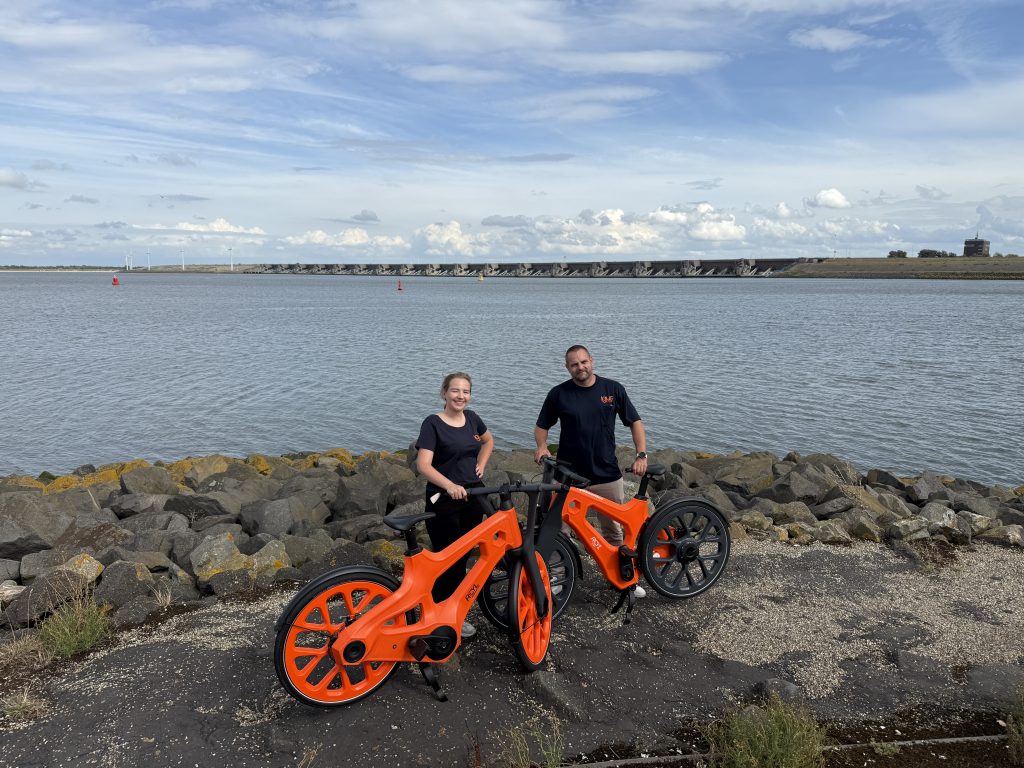
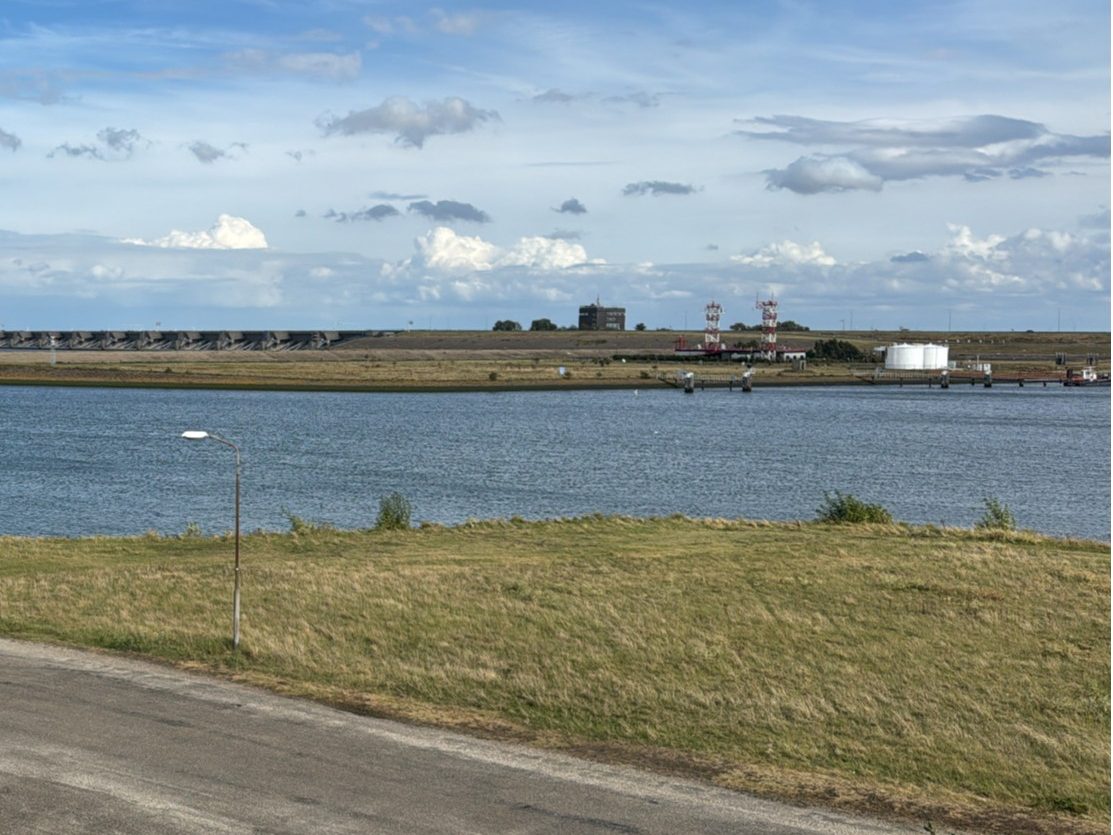
As the riders approached, Justine remarked on the sheer scale of the structure—“It feels less like a sluice and more like a fortress standing guard against the sea.” Mark, on the other hand, shared stories he had heard about the 1953 flood and how deeply it shaped Dutch society. For him, the Haringvliet is not just concrete and steel, but living proof of his country’s determination.
A landscape shaped by water
Cycling through this area, you are constantly reminded that the Netherlands is a country below sea level—about a third of its land lies beneath it. Without dikes, dunes, and sluices, much of the western Netherlands, including cities like Rotterdam and Amsterdam, would simply disappear underwater. Yet instead of seeing water only as a threat, the Dutch have also embraced it as an opportunity:
creating fertile farmland through land reclamation, building world-leading ports, and turning flood defenses into landmarks of national pride.
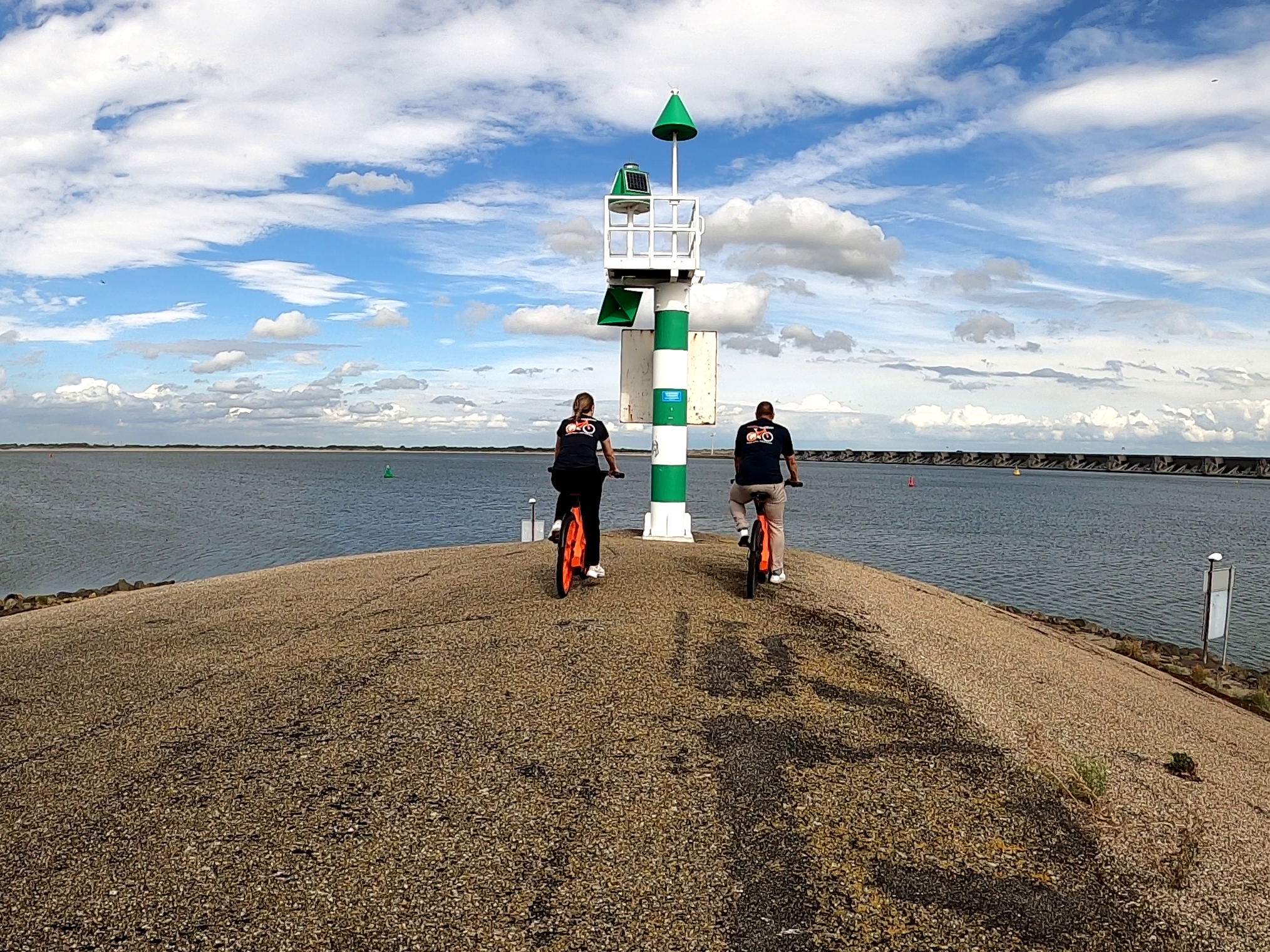
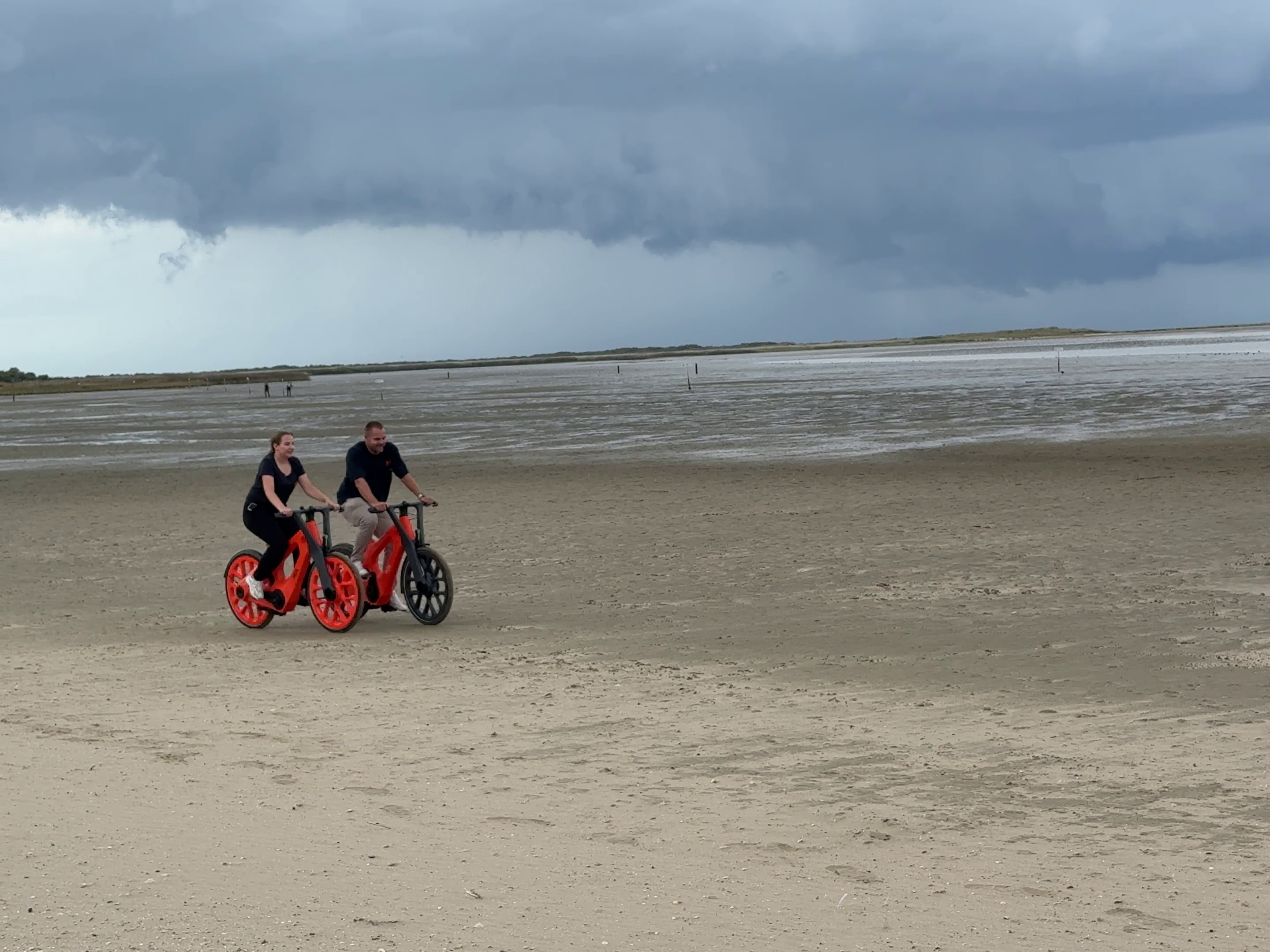
The region around the Haringvliet is rich in history and nature. In Roman times, this was already an important delta for trade routes. Today, it is a haven for birdlife—especially since the gradual reopening of the sluices in 2018, which allows more salt water to mix with fresh water, restoring natural habitats for fish and migratory birds.
Pedaling Through History
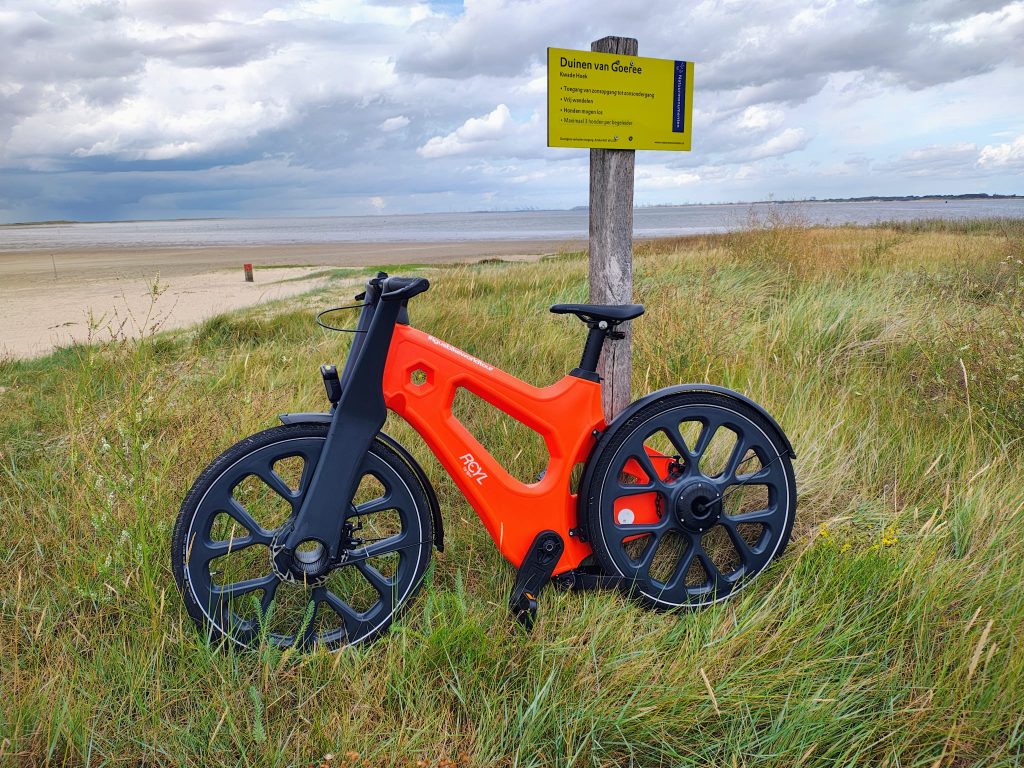
Stage 4 of the igus bike tour was more than a physical ride; it was a journey through centuries of Dutch history and engineering brilliance. From the futuristic bridges of Rotterdam to the colossal sluices of the Delta Works, every pedal stroke reminded the riders — Mark van de Waal and Justine Burcham — of the Netherlands’ constant dialogue with the water: a dialogue of respect, caution, and creativity.
As the team rolled past wind-ruffled waters and endless dikes, it became clear: here, the battle against the water is not just about survival. It is about shaping a future where people and water can live side by side.
Our riders:
Justine Burcham
In my role as a Marketing Assistant, I work on a variety of projects. The opportunity to contribute new ideas and apply creativity makes this position even more exciting. One of the highlights is supporting the igus:bike tour – a unique initiative that showcases our commitment to sustainability and innovation. This experience, among others, allows me to contribute to the growth of igus.
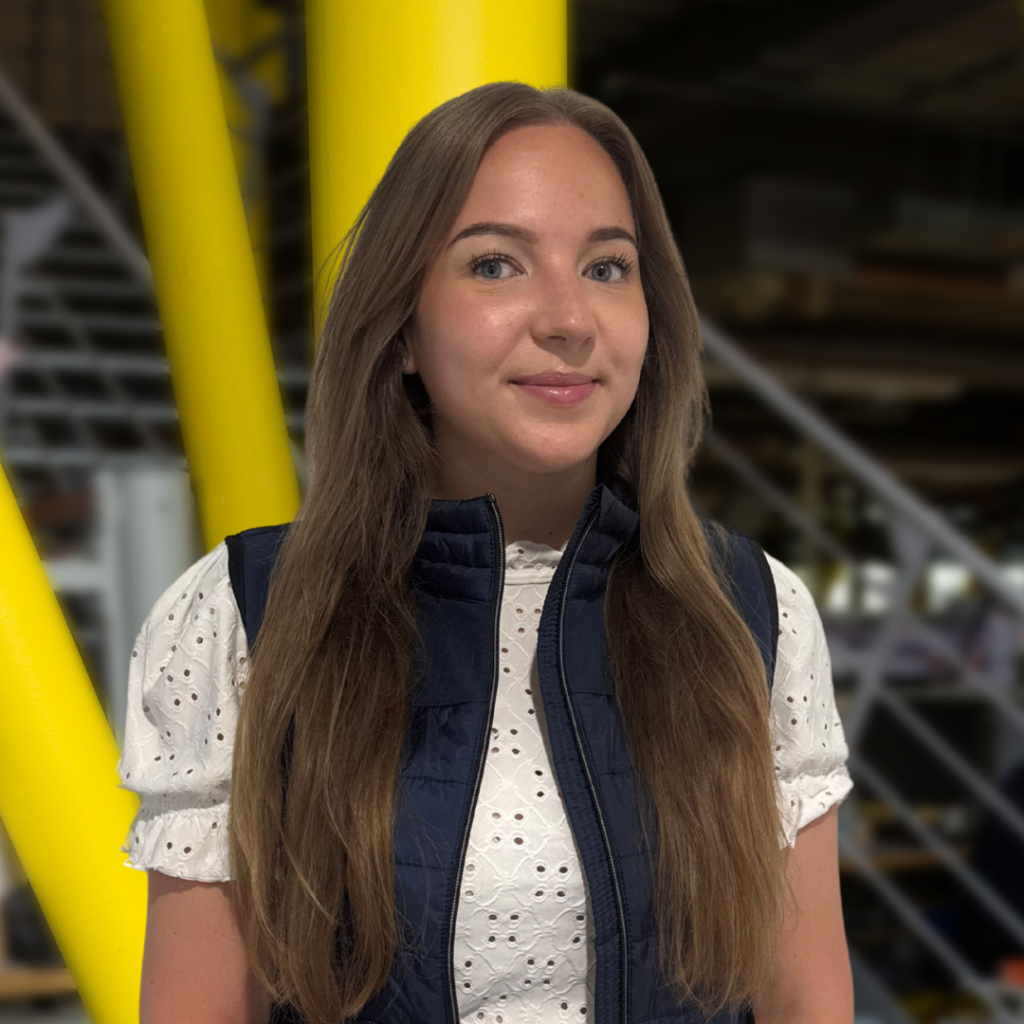
Mark van de Waal
I joined igus on November 1, 2010, and have now been working at this innovative company for almost 15 years with great pleasure. During that time, I have had the opportunity to work in a variety of positions – from inside sales and product management to online marketing, and now as marketing manager.
What makes working at igus so special? Every day is different! Thanks to the enormous drive for innovation, the work always remains challenging and inspiring. A good example of this is the igus:bike tour, where innovation and sustainability literally come together.
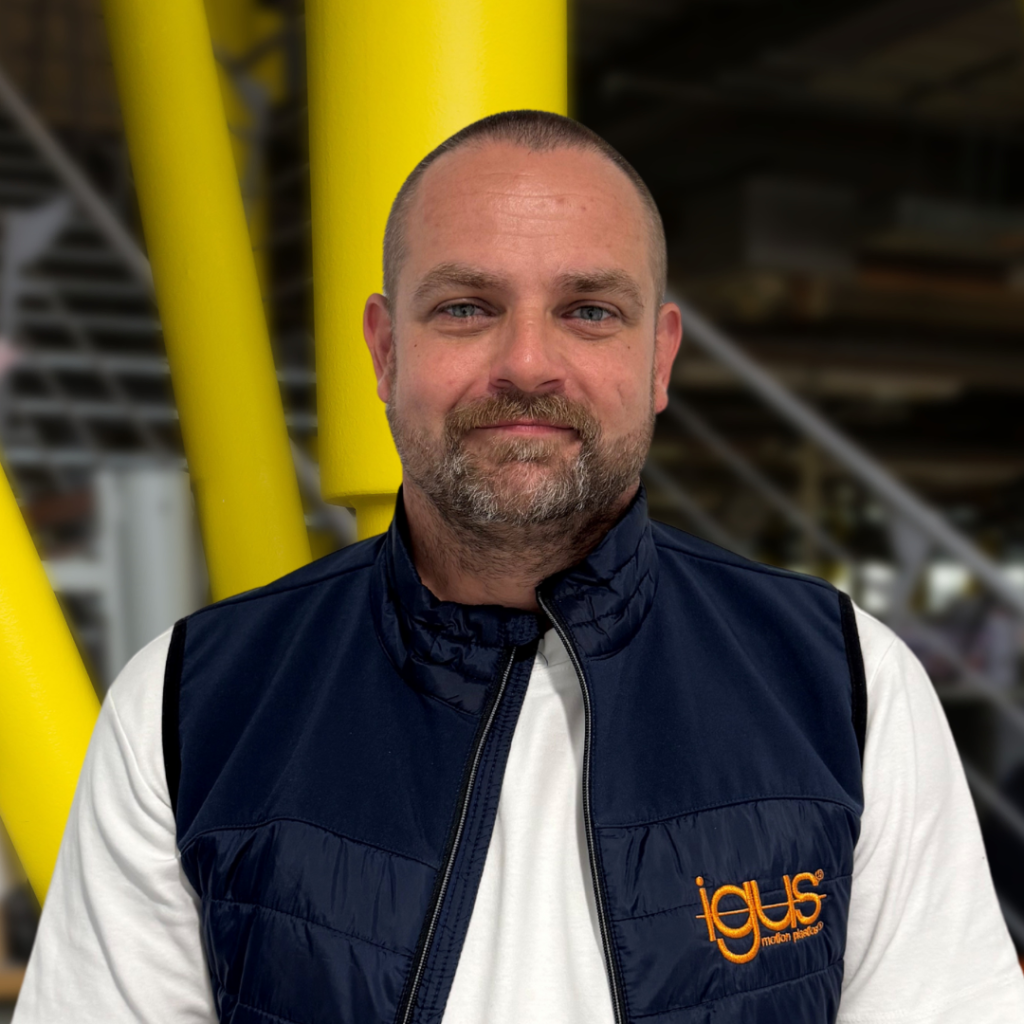
René van Dijk
Since March 1st, 2024, I have been part of igus bv. I started out in Outside Sales, but quickly transitioned into the role of Shore Power Manager & Project Sales. In this position, I am responsible not only for shore power solutions within the Netherlands, but also for a wide range of projects that involve complex engineering challenges.
What excites me most about this role? Without a doubt, it’s the people I get to work with every day. That includes my 5,000+ colleagues across the globe, but just as much the customers I meet. One day I might be collaborating with an independent contractor, the next I could be discussing solutions with the CEO of a multinational, and the day after that with representatives from the Ministry.
The diversity of people and projects keeps things dynamic and inspiring.
Map of the stage:
